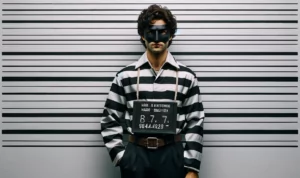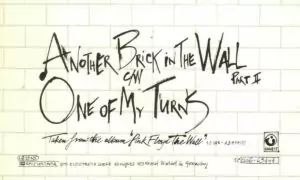By Nicky Charlish

✅ AI Essay Writer ✅ AI Detector ✅ Plagchecker ✅ Paraphraser
✅ Summarizer ✅ Citation Generator
Sex, drugs, and rock and roll are all stuff that come to mind when people talk of the counterculture. We are all used to endless television documentaries where the sixties—considered to be the age when it came into its own—are symbolised by grainy black-and-white shots of mini-skirted girls shrieking at the Beatles and acid-addled hippies doing their thing at rock concerts. It would be great if someone could give us a break from all that old stuff. But is there anything new left to say?
Barry Miles shows that there is. He is not just, as this book’s blurb reminds us, the author of many seminal works on popular culture. He is a battle-scarred veteran who has fought in its trenches and this book is, to an extent, an autobiographical account. Quoting Ruskin’s comment about research leading ‘into fields of infinite enquiry’ he has put limits on the topics he covers: he has avoided areas like underground rock—except punk—which have been covered extensively, as well as the experience of visiting black American jazz musicians in London as being outside his experience. Instead, he has ‘concentrated on people who make their art their life, who live in the counterculture, not comment upon it, those who want to transform society, and not necessarily from within’. This promises much: Miles delivers, but not always in ways he may have intended.
The first thing Miles’ approach does is make us ask the question: can counterculture be considered as a single entity? This is because he puts together a mish-mash of people who he feels fall within its boundaries, including Soho and Fitzrovia hard-drinking bohemians like Francis Bacon, the painters ‘the Roberts’ Colquhoun and MacBryde, and the writer Julian MacLaren-Ross; Angry Young Men like John Osborne and Kingsley Amis; skiffle and jazz clubs; the King’s Road scene of the sixties and seventies; underground bookshops like Better Books and Indica; JG Ballard; performance artists like Genesis P-Orridge; punks and New Romantics. But, whilst all may have had either hedonistic lifestyles (sex, drink, and/or drugs) or socio-political beliefs that ran counter to those espoused by the majority of British people, did this mean that everyone considered by Miles to be in the counterculture were of one heart and mind? As with any religious, political, or social movement, the question arises: how many wanted to effect some form of radical transformation, how many wanted what they could get out of it for themselves, and how many wanted a bit of both?
Whilst post-war Soho bohos may have uttered fashionable left-wing sentiments, it is difficult to imagine many—if any—of the habitues of the Highlander or the Colony Room being enthusiastic about British post-war socialist austerity, let alone living happily under a Stalinist regime. The Angry Young Men attacked, not traditional social or academic standards, but the weakness of those charged with upholding them, and some would become doughty warriors for Mrs Thatcher. The disillusion felt by the middle-class managers of punk group The Members stemmed from the fact that they had been brought up to be leaders in a form of society which longer existed.
Situationism was—as Miles reminds us—a popular concept among sections of counterculture. Espousing parts of Marxism, Dadaism, and Surrealism, it propagated the idea that artists should act as provocateurs, removing the barriers between art and life by creating absurd situations in urban environments as a reaction against the status quo. But it is difficult not to feel that, with these attitudes and activities, we have been here before: what we seem to have are the pre-war jolly japes of Belgravia’s Bright Young Things joined with the politics and mores of the BloomsburySet taken down a social notch or two by being transplanted to Soho, Camden, and Notting Hill.
Among those who wanted to introduce people to new ways of seeing a good deal of personal indulgence seemed to intrude: the work of performance artist Jeff Nuttall made a point of featuring his fetishes about offal and large-size ladies’ underwear. Miles gives scant mention to playwright Joe Orton but—although he used traditional theatrical construction and worked within the mainstream—it is difficult not to feel that Orton achieved more in bringing material then considered controversial (such as fluid sexuality and police corruption) to public notice than the rest of the underground put together. Had he dodged the fatal blows from his lover Kenneth Halliwell’s hammer, he might have gone on to do sterling work attacking the conceits on both sides of the socio-politico divide over the next four decades. But Miles shows that some solid work which did not simply preach to the converted was carried-out by counterculture. The Anti-Uglies were a pressure group from the Royal College of Art which, in 1959, arose dedicated to protesting against the ugly buildings that were springing up as part of London’s post-war reconstruction: they deserve a mention in dispatches in the ongoing campaign for good architecture.
Miles examines the opposition which counterculture met—the Rolling Stones’ drugs bust of 1967 and the Oz magazine obscenity trial of 1971 being the most famous examples. In discussing police opposition to International Times (IT), the underground newspaper which Miles helped found, he says that the ‘establishment is threatened by even the slightest demonstration against its all-pervasive control over people’s lives’. But is this an accurate assessment here? It is more likely that the establishment of the 1960s was split between traditionalists (certain sections of the media, police, and judiciary) and modernisers (who were liberalising the laws on abortion and homosexuality. And Labour prime minister Harold Wilson—like one of his successors three decades later—was happy to be seen in the company of rock stars).
As Miles points out, raids by the police’s Obscene Publications Squad on London bookshops and art galleries for ‘obscene’ material gave them easy targets, whereas they had had to conceal their mutually-beneficial financial relationship with Soho pornographers. And there is little to suggest that the country was on the verge of adopting countercultural beliefs and mores. (Arguably, during the period under discussion, most British people were concerned about matters like unemployment, financial insecurity, and the state of public services than the concerns of counterculture.) The main result of the prosecutions was to make the establishment look stupid.
Meanwhile, the love and peace message of alternative London did not reach out effectively to all the capital’s citizens: Miles, entrusted one night with the takings of hippie arts club UFO, was attacked in a carefully-planned robbery in Camden. Miles rightly devotes a chapter to the film Performance (released in 1971, but made three years earlier) about a gangster on the run (James Fox) hiding-out with a washed-up rock star (Mick Jagger). But he does not emphasise that its ending (the gangster shoots the rock star) symbolised—among other things—the end of the alternative lifestyle dream.
Miles mentions that when the organisers of the drag festival Alternative Miss World were sued by the Morleys (organisers of the official Miss World beauty contest) they were defended by a young barrister named Anthony Blair, and it would have been interesting if Miles had raised the issue of how many prominent people in today’s political and arts establishments may have either started-out with—or reneged on—the counterculture in one way or another. Yes, this something we can do for ourselves with some internet detective work, but it would be useful to have attention drawn to any interesting finds within the pages of a book where the information could be absorbed in a more unified manner.
Whilst we can question Miles’ definition of counterculture—and raise questions about missed connections and interpretations—we should also rejoice in the fact that his approach unearths a wide spectrum of material. The book has an excellent general bibliography as well as suggested further reading on the main topics it covers, making it a handy compendium for future students of the period who want something more substantial than gobbets from the internet as well as a stimulus to further study.
He peppers his book with amusing anecdotes or recondite information. A plain-clothes police raid on the IT was foiled by the simple expedient of phoning the police and reporting that a group of men were trying to break in. The band Pink Floyd originally derived its title from the name of band member Syd Barrett’s cat. Punk band the Damned briefly bore—at the suggestion of singer Chrissie Hynde—the monicker ‘Mike Hunt’s Honourable Discharge’. Unsophisticated readers may be surprised to learn from his account of punk club the Roxy that ‘As with all clubs, the action was mainly in the ladies’ toilets’. And he sticks his neck out by rightly praising the New Romantics—usually condemned because of their flamboyance and commercial-mindedness—for being ‘a positive flipside to punk, stressing the self empowerment and do-it-yourself creativity of the movement’.
Miles considers that today ‘bohemia has been globalised’, that ‘the underground is a state of mind’. He feels that the Young British Artists who shot to fame in the 1990s are an example of commodification, but then, as he himself points out, people have been making similar claims for years when something financially successful has appeared on the countercultural scene. But he could have made more of the point that there is still a need for counterculture, and that it has new enemies to fight—all-pervasive relativism and political correctness enforced by governmental bureaucratised collectivism. He speaks with enthusiasm of the large 2008 London Gay Pride march which he witnessed: on the face of it, counterculture values have triumphed. But such triumphs are, arguably, considered expendable by today’s establishment in the face of other threats. As he reminds us, no British newspaper or TV channel had the guts to show the Danish cartoons of the prophet Mohammed, which caused a furore in 2005. (After 7/7, veteran sixties artist John Latham had to suffer an exhibit entitled ‘God is Great’ being removed by the Tate from its 2005 exhibition John Latham in Focus. The Tate did not want to endanger public safety: most of the art world thought the removal was done for fear of upsetting Muslim fundamentalists.)
Meanwhile, protest is not dead: the sort of playfulness propagated by the Situationists is now a regular feature of demonstrations by pro-hunting and fathers’ rights groups (one wonders what some of the avant-garde’s old guard think of that). With the generation that imbibed the counterculture ethos of the 1960s now reaching retirement age, and empowered by affluence and the internet (the latter now fulfils the function of the old alternative press, and the Dutch cartoons are available there), a new age of protest may be about to emerge. If so, this book will serve as history, handbook, and cautionary tale.
——————–
Written under a Creative Commons License, with edits: https://creativecommons.org/licenses/by/1.0/
Follow us on Reddit for more insights and updates.





Comments (0)
Welcome to A*Help comments!
We’re all about debate and discussion at A*Help.
We value the diverse opinions of users, so you may find points of view that you don’t agree with. And that’s cool. However, there are certain things we’re not OK with: attempts to manipulate our data in any way, for example, or the posting of discriminative, offensive, hateful, or disparaging material.